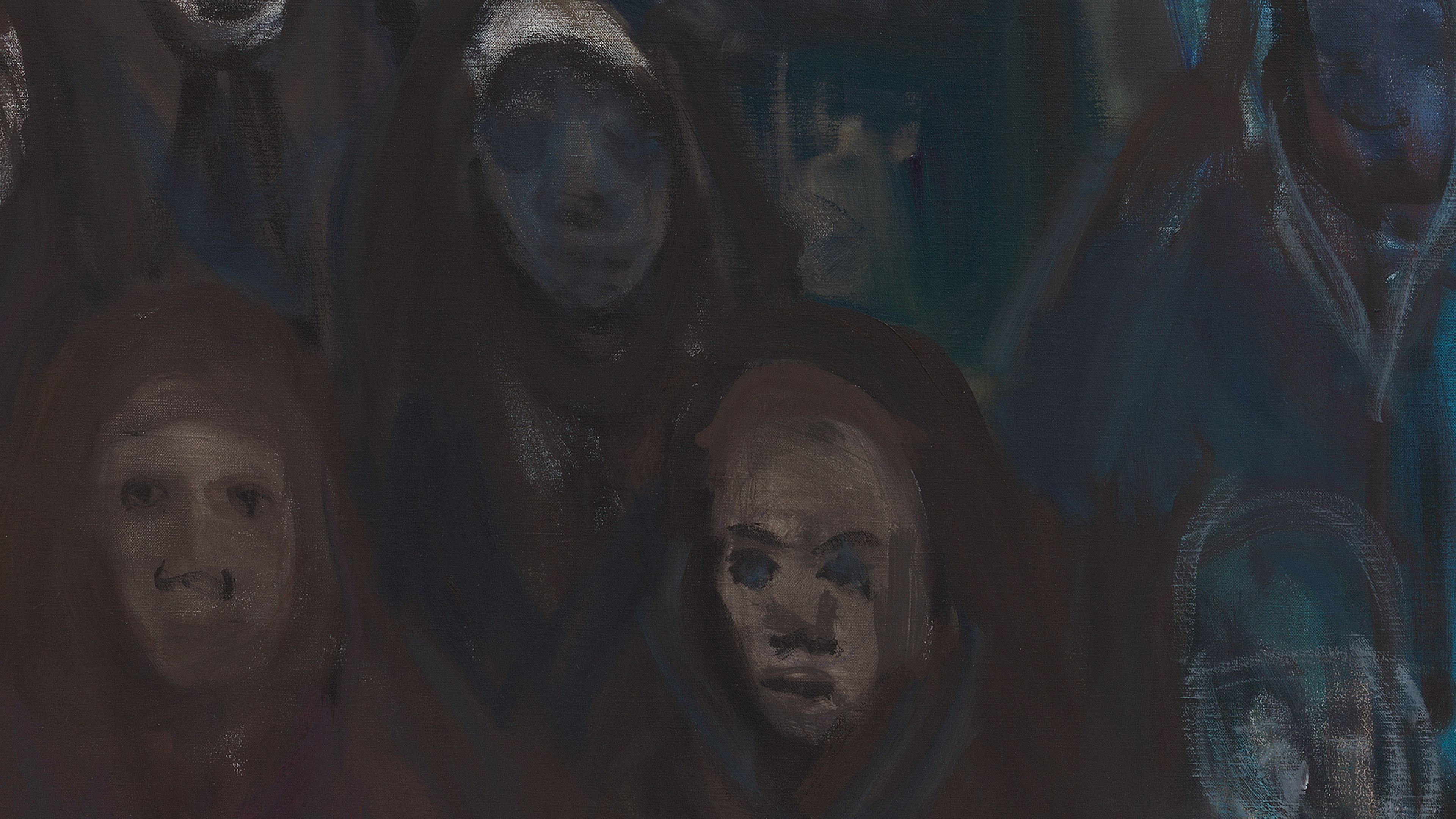Exceptional Works: Marlene Dumas
Lost, 2015–2017
Oil on canvas 78 3/4 x 39 3/8 inches 200 x 100 cm



A still from footage of girls abducted by Boko Haram in 2014
Vehemently opposed to Western education, the militant group Boko Haram attacked the Government Girls Secondary School in Chibok in April 2014, kidnapping an estimated 276 students. Arranged in rows and depicted in headscarves and long robes, the girls appear in Dumas’s painting as they have in a number of videos released over the years by Boko Haram. Dumas’s subtle handling of paint and color allows many of the girls to retain a compelling individuality despite their confinement.
“Over the past 40 years,” Sean Burns writes, Dumas “has transformed found images of violence, mourning and melancholy in paint, inviting us to look unflinchingly at scenes—and faces—of anguish.”
Marlene Dumas, Lost, 2015–2017 (detail)

Marlene Dumas, Angels in Uniform, 2012. Pinault Collection

Edvard Munch, Evening on Karl Johan, 1892. KODE Art Museum, Bergen, Norway
“I wanted to be a modern painter. The need to get rid of the background, making it as flat as possible, became very important. So I ended up with all these isolated figures, or, in the case of a group … one body.”
—Marlene Dumas

Marlene Dumas, Lost, 2015–2017 (detail)

Marlene Dumas in her studio, 2014. Photo by Jackie Nickerson

Art Basel Paris
